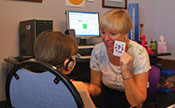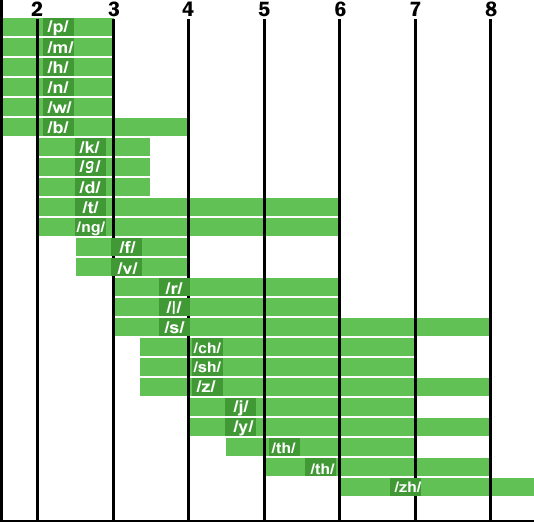Early Intervention For The Young

When we talk about normal development, we are talking about developing skills in five different areas:
- Gross motor: using large groups of muscles to sit, stand, walk, run, etc., keeping balance, and changing positions.
- Fine motor: using hands to be able to eat, draw, dress, play, write, and do many other things.
- Language: speaking, using body language and gestures, communicating, and understanding what others say.
- Cognitive: Thinking skills: including learning, understanding, problem-solving, reasoning, and remembering.
- Social: Interacting with others, having relationships with family, friends, and teachers, cooperating, and responding to the feelings of others.
When we talk about developmental milestones, we are using a set of functional skills that most children can do at a certain age range. Your pediatrician uses milestones to help check how your child is developing. Although each milestone has an age level, the actual age when a normally developing child reaches that milestone can vary quite a bit. Every child is unique.
The language milestones for a developing child
| AGE | LANGUAGE LEVEL |
|---|---|
| Birth | Cries |
| 2-3 months | Cries differently in different circumstances; coos in response to you |
| 3-4 months | Babbles randomly |
| 5-6 months | Babbles rhythmically |
| 6-11 months | Babbles in imitation of real speech, with expression |
| 12 months | Says 1-2 words; recognizes name; imitates familiar sounds; understands simple instructions |
| 18 months | Uses 5-20 words, including names |
| Between 1 and 2 years | Says 2-word sentences; vocabulary is growing; waves goodbye; makes “sounds” of familiar animals; uses words (like “more”) to make wants known; understands “no” |
| Between 2 and 3 years | Identifies body parts; calls self “me” instead of name; combines nouns and verbs; has a 450 word vocabulary; uses short sentences; matches 3-4 colors; knows big and little; likes to hear same story repeated; forms some plurals |
| Between 3 and 4 years | Can tell a story; sentence length of 4-5 words; vocabulary of about 1000 words; knows last name, name of street, several nursery rhymes |
| Between 4 and 5 years | Sentence length of 4-5 words; uses past tense; vocabulary of about 1500 words; identifies colors, shapes; asks many questions like “why?” and “who?” |
| Between 5 and 6 years | Sentence length of 5-6 words; vocabulary of about 2000 words; can tell you what objects are made of; knows spatial relations (like “on top” and “far”); knows address; understands same and different; identifies a penny, nickel and dime; counts ten things; knows right and left hand; uses all types of sentences |
The speech milestones for a developing child (according to Sander) are listed below:

Figure 1. Average age estimates and upper age limits of customary consonant production. The solid bar corresponding to each sound starts at the median age of customary articulation; it stops at an age level at which 90 percent of all children are customarily producing the sound. (Based on Sander, 1972.)


Is your child struggling with speech, language and/or learning skills?


Ideally, my goal is for children to be successful at these various tasks by the time they are ready for kindergarten.
• group object and pictures into categories
• print own name
• recognize and name letters
• speak in complete sentences
• verbalize experiences, needs, and wants
• ask questions
• describe context of pictures
• retell a story
• enjoy rhymes and rhythms
• identify colors
• name common objects
• determine larger/smaller; longer/shorter; tall/short
• demonstrate positions: above, under, on, in, etc.
• know penny and nickel, dime, quarter, dollar
• recognize weather
• recognize animals and babies
• recognize a map, lake, mountain, river, ocean
• recognize different forms of transportation
• recognize roles of family members
• repeat clichés
• speak clearly
A child’s social success is also based on his/her communication skills. Most parents expect their child to have good listening and speaking skills. It is on these two skills that relationships grow. Most children acquire these skills naturally during the first few years of life. But, if your child is struggling in the development of these basic skills my Early Intervention Program might be helpful.
Please feel free to read two published case studies below, printed in Advance showing the effectiveness of my Early Intervention Program.
Case Study: “Early Intervention Program Utilizing Interactive Metronome”
Case Study: “Interactive Metronome: A Look Into An SLP’s Tool Box”

